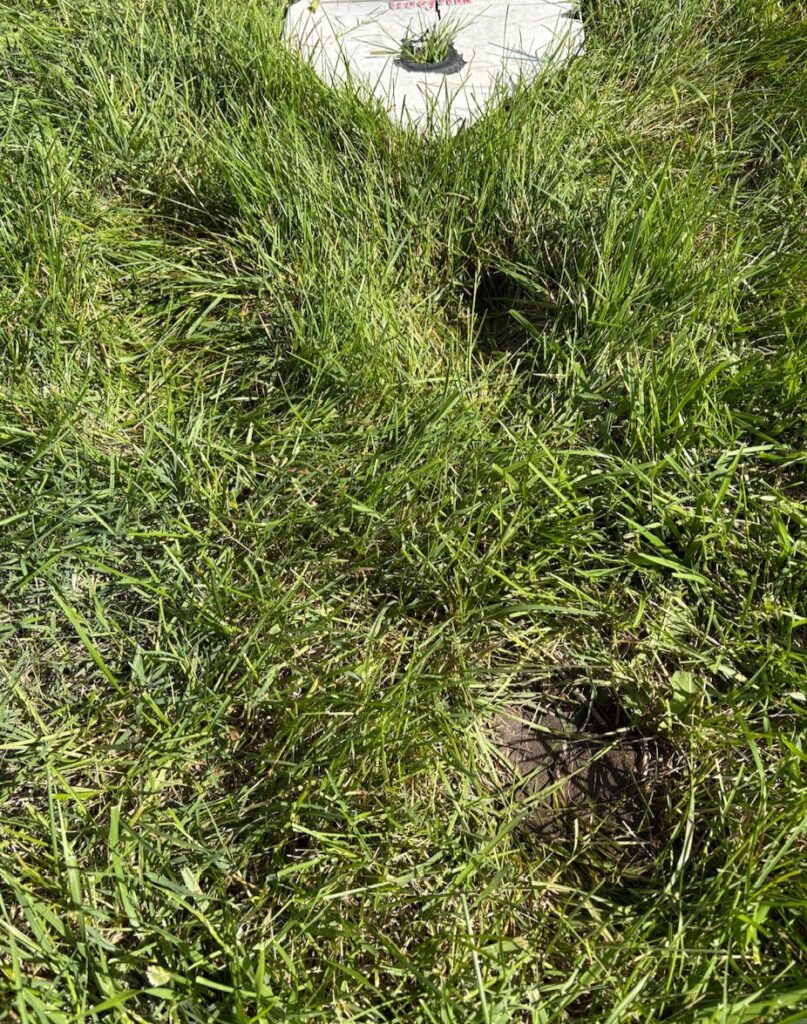There are divots and dead spots on our front lawn. One set is at sixty feet from wooden mound. Another at a distance I do not know, but my youngest son does. I carry homeplate forward from its mark at sixty feet until he tells me to stop, the distance of his Little League, where I lay the plate to ground and kneel in place behind.
The divots are in right angled patterns of three—two on the right and one to the left—where right knee rests and toe of shoe digs into earth behind; and to the left, opposite knee, where left foot rests as I kneel to catch.
It’s been a rainy spring and the ground is soft. Divots and depressions from repetition of place in catch of my sons’ throws.
In start of spring, I stepped off the distances. Now, I no longer do. Divots mark the spots, dead grass where homeplate covers.
It may not be the prettiest lawn, but it has the prettiest, and only, pitcher’s mound in the neighborhood’s front yards—Charleston Brown and the color of Kauffman Stadium’s when watered down and sprayed before start of game and again in seventh inning’s stretch.
We smile and wave at cars when they pass. We are genuinely happy (mostly—we all have days when strikes don’t hit and frustrations do, and these are as much of the-lessons we learn as learning throw) and we share it with those we see.
We meet and make friends of neighbors, mostly older, who stop to speak with the boys and reminisce on when they or their children played.
We made a friend today. His name is Bob.
There are divots and dead spots on our front lawn.
They mean more to me than the grass.
